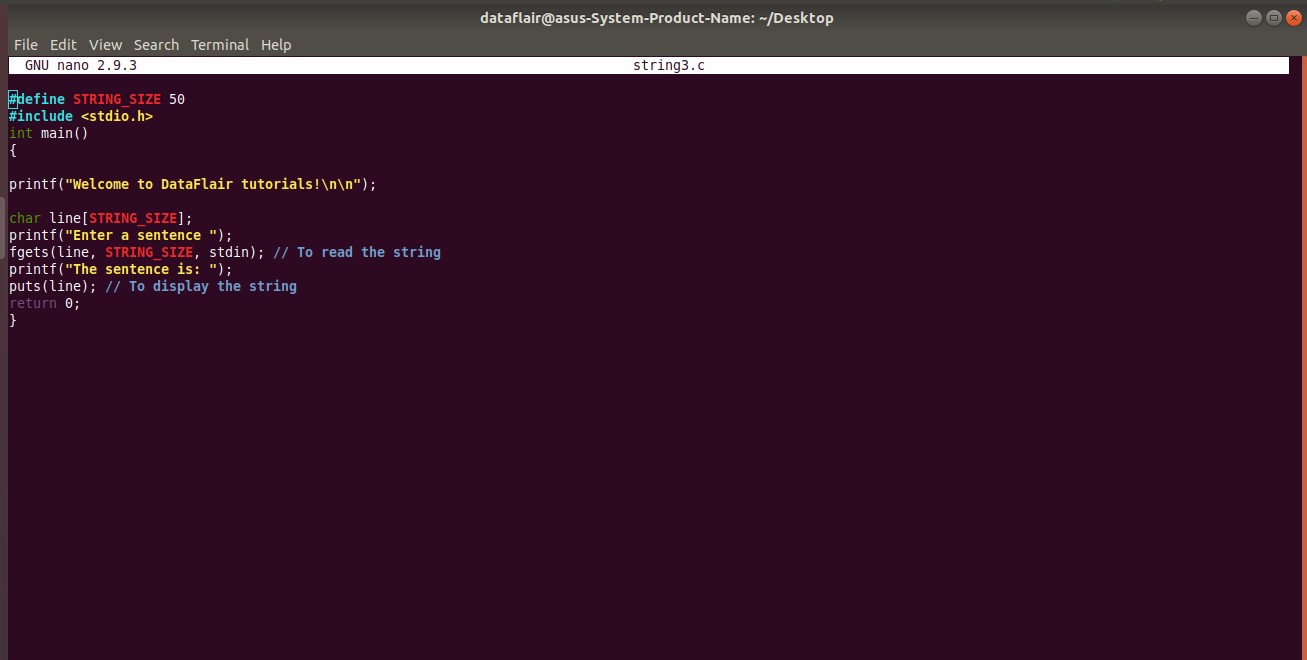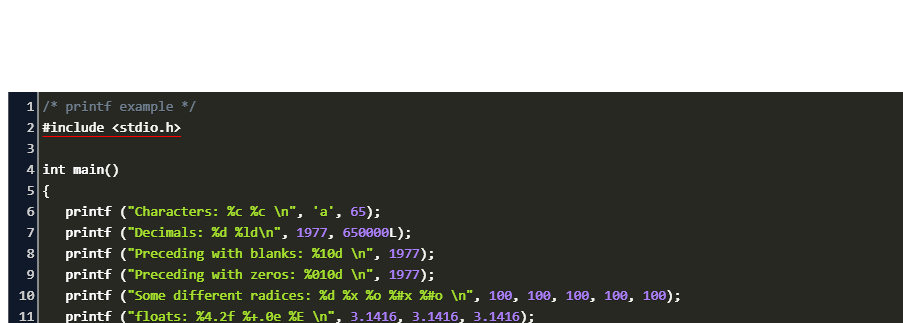What is a structure?
A structure is a user defined data type in C/C++. A structure creates a data type that can be used to group items of possibly different types into a single type.
- Jan 26, 2017 Basic difference beyween printf and cprintf is printf command is available in library, where as cprintf is available in. Speaking technically, printf command returns it output to both console and also to stdout due to its invol. Insert at the top of your files #include ' conio2.h' The file should be in your project directory.
- Error: 'yourFunction' was not declared in this scope.
How to create a structure?
‘struct’ keyword is used to create a structure. Following is an example.
The printf function writes the string pointed to by format to stdout. The string format may contain format specifiers starting with% which are replaced by the values of variables that are passed to the printf function as additional arguments. It is defined in header file. Storage Classes in C. Storage Classes are used to describe the features of a variable/function. These features basically include the scope, visibility and life-time which help us to trace the existence of a particular variable during the runtime of a program. C language uses 4 storage classes, namely: auto: This is the default storage class for.
Printf Was Not Declared In This Scope Dev C
{ charstreet[100]; charstate[20]; }; |

How to declare structure variables?
A structure variable can either be declared with structure declaration or as a separate declaration like basic types.
// A variable declaration with structure declaration. { } p1; // The variable p1 is declared with 'Point' structPoint intx, y; { structPoint p1; // The variable p1 is declared like a normal variable |
Note: In C++, the struct keyword is optional before in declaration of a variable. In C, it is mandatory.
How to initialize structure members?
Structure members cannot be initialized with declaration. For example the following C program fails in compilation.
{ intx = 0; // COMPILER ERROR: cannot initialize members here inty = 0; // COMPILER ERROR: cannot initialize members here |
The reason for above error is simple, when a datatype is declared, no memory is allocated for it. Memory is allocated only when variables are created.

Structure members can be initialized using curly braces ‘{}’. For example, following is a valid initialization.
{ }; intmain() // A valid initialization. member x gets value 0 and y // gets value 1. The order of declaration is followed. } |
How to access structure elements?
Structure members are accessed using dot (.) operator.
{ }; intmain() structPoint p1 = {0, 1}; // Accesing members of point p1 printf('x = %d, y = %d', p1.x, p1.y); return0; |

What is designated Initialization?
Designated Initialization allows structure members to be initialized in any order. This feature has been added in C99 standard.
{ }; intmain() // Examples of initializtion using designated initialization structPoint p2 = {.x = 20}; printf('x = %d, y = %d, z = %d', p1.x, p1.y, p1.z); return0; |
This feature is not available in C++ and works only in C.
What is an array of structures?
Like other primitive data types, we can create an array of structures.
{ }; intmain() // Create an array of structures arr[0].x = 10; return0; |

What is a structure pointer?
Like primitive types, we can have pointer to a structure. If we have a pointer to structure, members are accessed using arrow ( -> ) operator.
{ }; intmain() structPoint p1 = {1, 2}; // p2 is a pointer to structure p1 // Accessing structure members using structure pointer return0; |
What is structure member alignment?
See https://tutorialspoint.dev/slugresolver/structure-member-alignment-padding-and-data-packing/